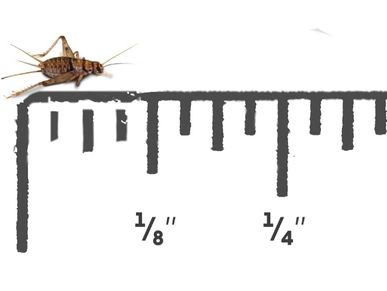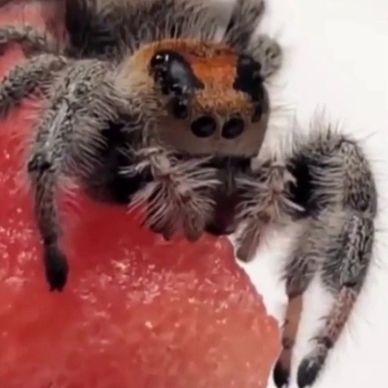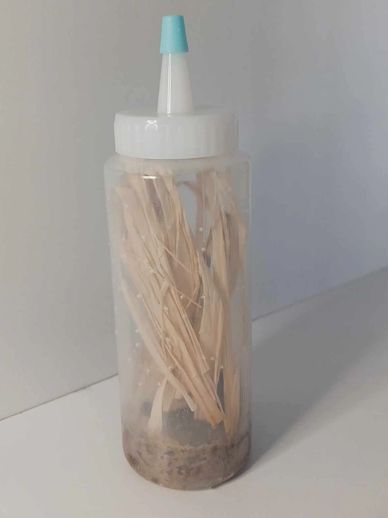What to feed your pet jumping spider
Slings Ages i2 & i3

Jumping spider slings begin to eat at age i2, when they leave the nest. They should be fed a diet of Melangoster fruit flies, at least 3 to 5 flies every other day.
Slings i4, i5 & i6

At i4 slings can be introduced to their first try at larger prey. Hydei fruit flies are a little bit larger than Melangoster and are a great first step. Next, the smallest of mealworm larvae and pinhead crickets can be introduced along with fly spikes and small roaches. Be sure not to offer too large or too intimidating of prey when beginning to introduce your jumping spider to new feeder insects.
Juveniles i6, i7 & i8
Sub Adults & Adults i9 & Older

Upgrading your jumping spider to small scrickets and mealworms is a great start for juveniles. Also, introducing different varieties of flies like blueblottle flies and houseflies makes for a fun hunt. Dubia roaches are also packed with nutrients.
Sub Adults & Adults i9 & Older
Sub Adults & Adults i9 & Older

Upgrading to larger sized prey your jumping spider was already eating is the first step for your Sub Adult. Adding any new prey should make for fun hunting, such as flying insects, and nutritional needs like waxworms for fat and moisture.
Sweet Fruits

Jumping Spiders love to suck down the nectar from fruits like watermelon, strawberries, grapes & mangoes. The sugar is a sweet treat and will give your jumper a little boost of energy. This is a great snack for post molt and senior & dehydrated spoods.
We Offer A Small Assortment Of Feeders For Your Jumping Spider

Our fruit flies cultured in condiment bottles have changed the game for fruit fly feeding. If you're adopting a sling from us, these are a must have and are a part of our Sling Starter Packs.
